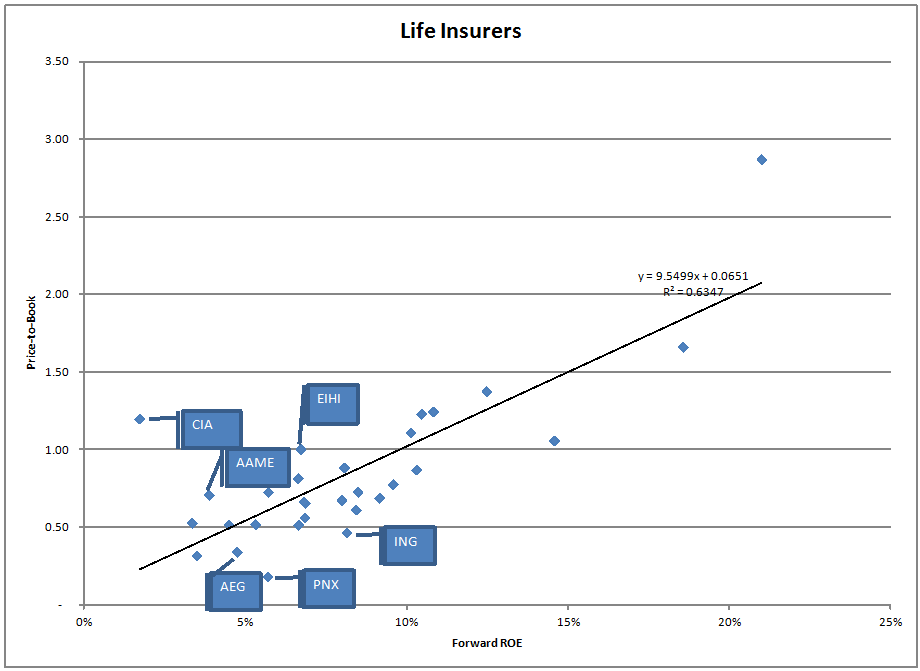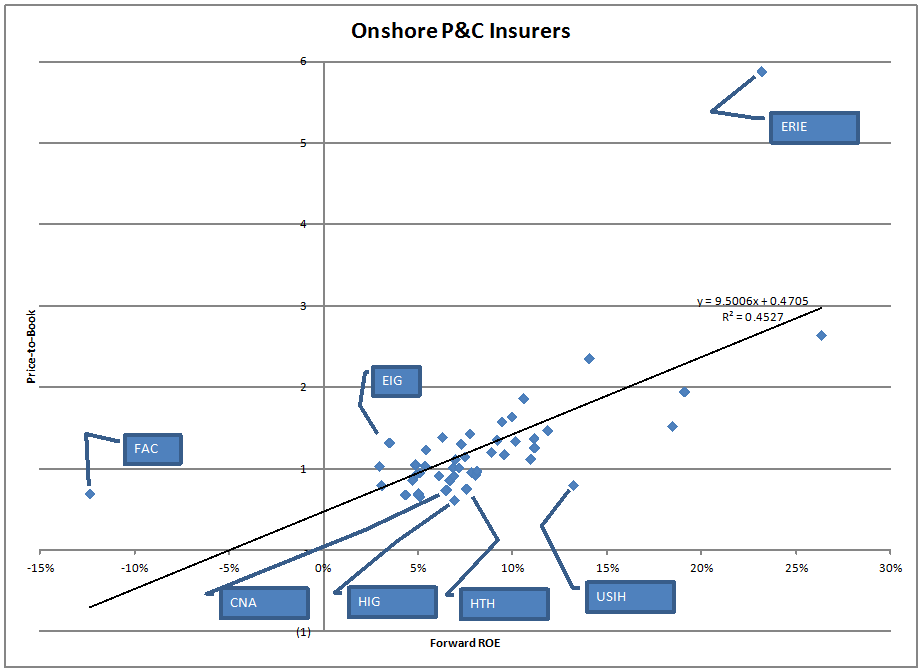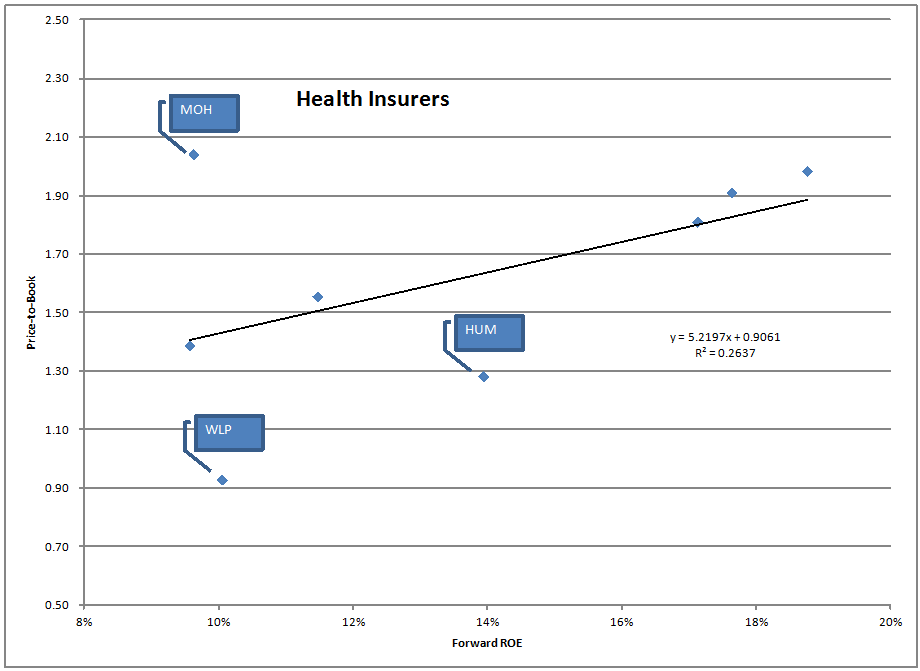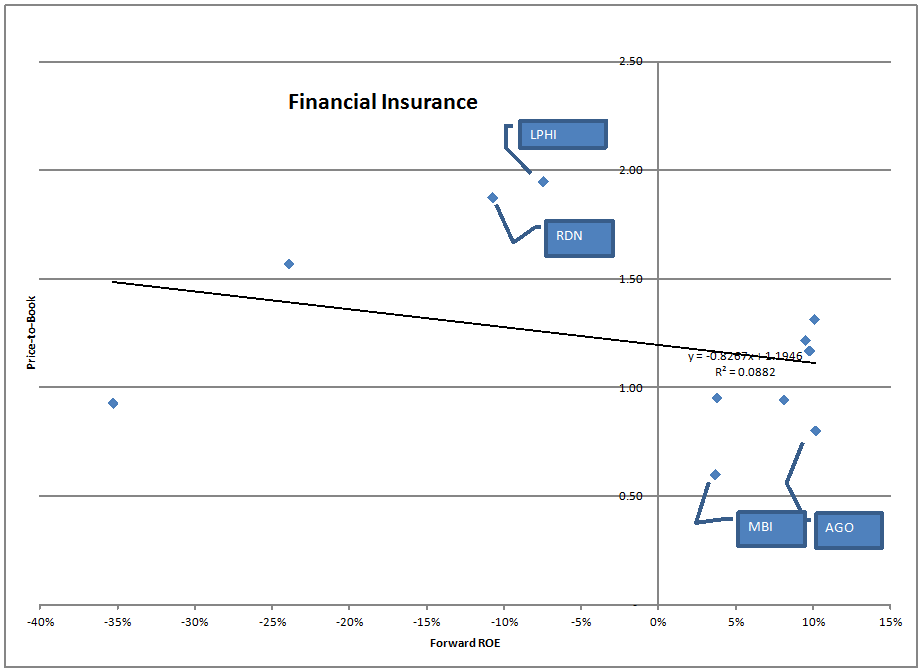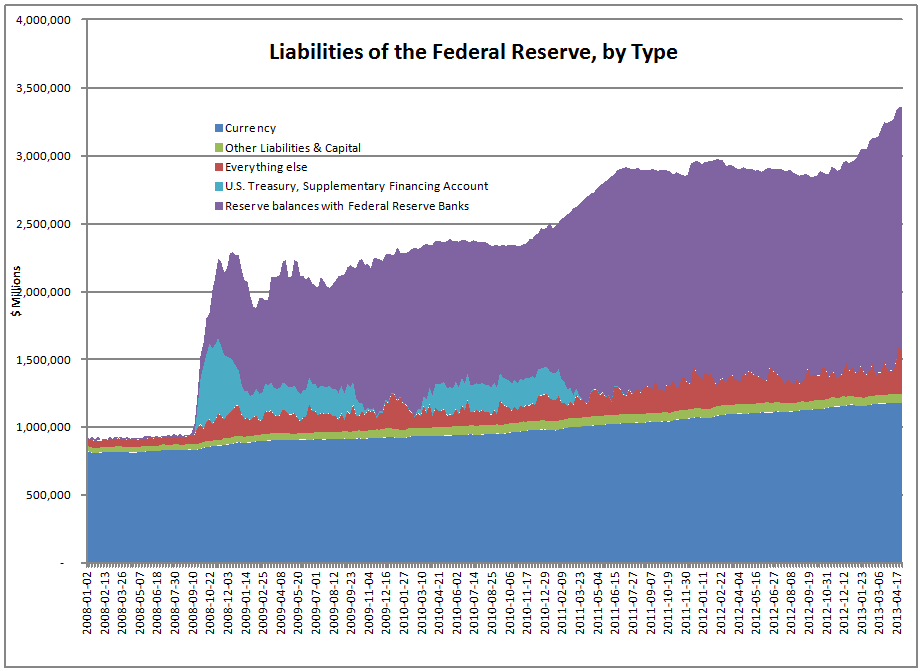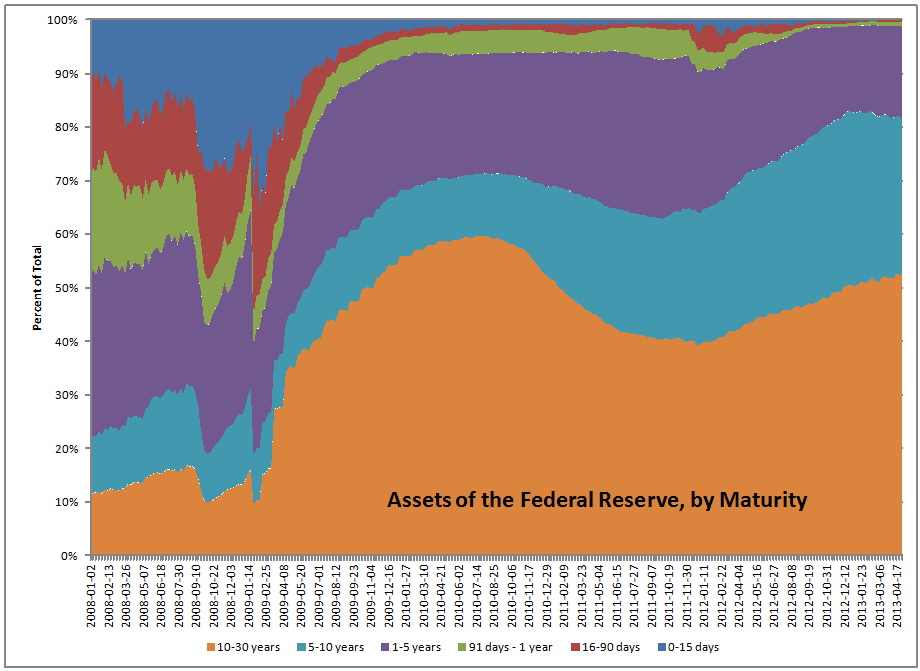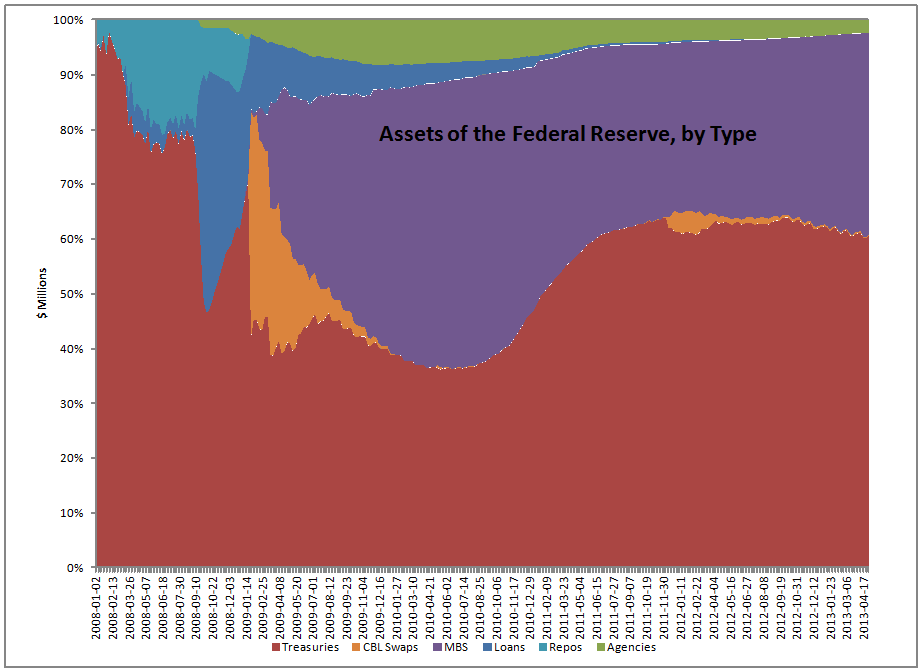The Rules, Part XXXVII
The foolish do the best in a strong market
“The trend is your friend, until the bend at the end.”? So the saying goes for those that blindly follow momentum.? The same is true for some amateur investors that run concentrated portfolios, and happen to get it right for a while, until the cycle plays out and they didn’t have a second idea to jump to.
In a strong bull market, if you knew it was a strong bull market, you would want to take as much risk as you can, assuming you can escape the next bear market which is usually faster and more vicious.? (That post deserves updating.)
Here are four examples, two each from stocks and bonds:
- In 1998-2000, tech and internet stocks were the only place to be.? Even my cousins invested in them and lost their shirts.? People looked at me as an idiot as I criticized the mania.? Buffett looked like a dope as well because he could not see how the enterprises could generate free cash reliably at any intermediate time span.
- In 2003-2007, there were 3 places to be — owning homebuilders, owning depositary financials or shadow banks, and buying residential real estate directly.? This was not, “Buy what you know,” but “Buy what you assume.”
- In 1994 many took Mexican credit risk through Cetes, Mexican short-term government debt.? A number of other clever investors thought they had “cracked the code” regarding residential mortgage prepayment, and using their models, invested in some of the most volatile mortgage securities, thinking that they had eliminated all risk, but gained a high yield.? Both trades went badly.? Mexico devalued the peso, and mortgage prepayments did not behave as expected, slowing down far more than anticipated, leading the most levered players to? blow up, and the least levered to suffer considerable losses.
- 2008 was not the only year that CDOs [Collateralized Debt Obligations] blew up.? There were earlier shocks around 2002, and the late ’90s.? Those buying them in 2008 and crying foul neglected the lessons of history.? The underlying collateral possessed no significant diversification.? Put a bunch of junk debt in a trust, and guess what?? When the credit cycle turns, most of those bonds will be under stress, and an above average amount will default, because the originators tend to pick the worst bonds with a rating class to maximize the yield, which allows the originator to make more.? Yes, they had a nice yield in a bull market, when every yield hog was scrambling, but in the bear market, alas, no downside protection.
I could go on about:
- The go-go years of the ’60s or the ’20s
- The various times the REIT market has crashed
- The various times that technology stocks have wiped out
- And more, like railroads in the late 1800s, or the money lost on aviation stocks, if you leave out Southwest, but you get the point, I hope.
People get beguiled by hot sectors in the stock market, and seemingly safe high yields that aren’t truly safe.? But recently, there has been some discussion of a possible “safety bubble.”? The typical idea is that investors are paying up too much for:
- Dividend-paying stocks
- Low-volatility stocks
- Stable sectors as opposed to cyclical sectors.
A “safety bubble” sound like an oxymoron.? It is possible to have one?? Yes.? Is it likely?? No.? Are we in one now?? Gotta do more research; this would be a lot easier if I were back to being an institutional bond manager, and had a better sense of the bond market pulse.? But I’ll try to explain:
After 9/11/2001, institutional bond investors did a purge of many risky sectors of the bond market; there was a sense that the world had changed dramatically.? At my shop, we didn’t think there would be much change, and we had a monster of a life insurer sending us money, so we started the biggest down-in-credit trade that we ever did.? Within six months, yield starved investors were begging for bonds that we had picked up during the crisis.? They had overpaid for safety — they sold when yield spreads were wide, and bought when they were narrow.
But does this sort of thing translate to stocks?? Tenuously, but yes.? Almost any equity strategy can be overplayed, even the largest and most robust strategies like momentum, value, quality, and low volatility.? In August of 2007, we saw the wipeout of hedge funds playing with quantitative momentum and value strategies, particularly those that were levered.
Those with some knowledge of market? history may remember in the ’60s and ’70s, there was an affinity for dividends, with many companies borrowing to pay the dividend, and others neglecting necessary capital expenditure to pay the dividend.? When some of those companies ran out of tricks, they would cut or eliminate the dividend, and the stock would fall.? Now, earnings coverage of dividends and buybacks seems pretty good today, but watch out if one of the companies you own has a particularly high dividend.? You might even want to look at some of their revenue recognition and other accounting policies to see if the earnings are perhaps somewhat liberal.? You also compare the dividend to what the cash flow from operations is, less cash needed for maintenance capital expenditure.
I don’t know whether we are in a “safety bubble” now for stocks.? I do think there is a “yield craze” in bonds, and I think it will end badly when the credit cycle turns.? But with stocks, I would simply say look forward.? Analyze:
- Margin of safety
- Valuation, absolute & relative
- Return on equity
- Likely and worst case earnings growth
And then balance margin of safety versus where you have the best opportunities for compounding capital.? If relative valuations have tipped favorably to less common areas for stock investing that considers safety, then you might have to consider investing in industries that are not typically on the “safe list.”? Just don’t? compromise margin of safety in the process.



